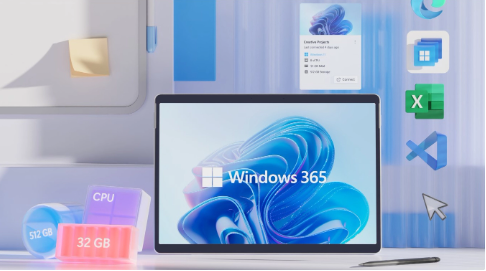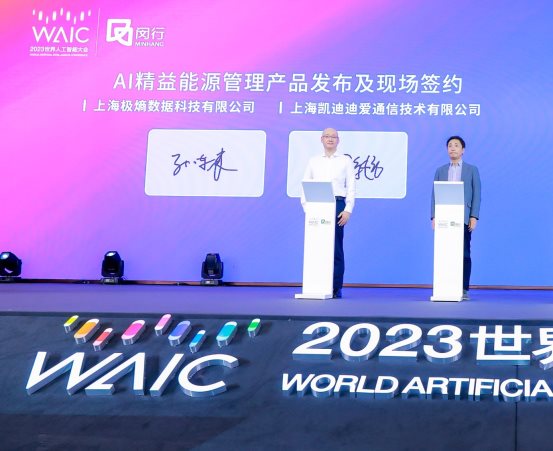The U.S. released latest CPI Data of January. At the same time, even though the U.S. President Trump pushed pressure on the Fed, policymakers still signaled they will stay on the sidelines on cutting rates.
How will the Fed’s rate path affect the U.S. and other countries? As major central banks began to diverge on monetary policy, how will the global economy perform this year? Samp;P Global Ratings’ Global Chief Economist Paul Gruenwald is joining the conversation with SFC journalist.
“The U.S. economy needs to slow down to a more sustainable path.” Paul Gruenwald expressed in the interview that the U.S. economy is running a bit hot now. So he considered the rest of the decline of the Fed’s rate to be relatively slow.
Coming to the new tariffs enforced by President Trump, Paul Gruenwald pointed out that tariffs are almost uniformly negative, which will lead to slower growth, higher unemployment, higher inflation, and higher relative policy rates. ‘Nobody's going to win the trade war.’
SFC Markets and Finance: This week we got the latest CPI data. It rose 0.5% in January, putting the annual inflation rate at 3%. Does this meet your expectation?
Paul Gruenwald: We know the inflation has been coming down from the peak a few years ago. It reached 8%, 9%, 10% here in the U.S., depending on your measure. The Fed has been trying to bring it down. The economy is still running a bit hot in the U.S. So there's a lot of talks about what we call the ‘last mile’, getting it from 3% down to 2% is going to be difficult. And I think today's data print is just another example of the data going sideways for a while. The Fed has been pretty clear that they're watching the data. They're not going to automatically continue to cut rates. And we only have one more Fed cut this year. So we think this data today strengthens the case to move cautiously with further rate cuts. Again, the U.S. economy needs to slow down a bit to a more sustainable path. So just another piece of evidence that the rest of the decline in the Fed funds rate is going to be relatively slow.
SFC Markets and Finance: You think there’s one more rate cut this year. When will this happen?
Paul Gruenwald: That's gonna depend. We may get it, in the next few months, not in the next meeting, but certainly in the first half of the year. We did previously have three cuts in 2024, but we think the combination of still strong growth and some uncertainties around the tariffs is going to give the Fed some pause.But again, we think there's one more cut probably in the first half of the year. But again, today's data release suggests the Fed is going to move cautiously.
SFC Markets and Finance: How many basis points will the Fed cut?
Paul Gruenwald: We think it's going to be 25 . They did do 50 the last September, but we have always expected the Fed to move more slowly going down. So we know rates went up quickly a few years ago when inflation shot up to a very high level. But again, the economy is pretty strong, the labor market looks good, unemployment is only 4%, so the Fed can move gradually. So unless we get a big downward surprise in the data, and that's not what we're seeing, we think the rate cuts are going to be 25 basis points.
SFC Markets and Finance: I think it might be the bad news for the rest of the world. How will the Fed rate path impact other regions?
Paul Gruenwald: It depends on countries. A lot of countries that are tied closely to the U.S. They may have strong trade ties, they may have U.S. dollar denominated debt, and they may be sensitive to capital inflows. Those countries probably don't want to get too far away from the pace of the Fed. Some of the larger economies, Eurozone, for example, China is obviously another one. They can have their own monetary policy that's largely independent from the Fed. So it really matters what type of countries we're talking about. But there is definitely a group of countries whose central banks are at least partially constrained by the fact that the Fed’s moving more slowly now. So they'll be very cautious about cutting rates too aggressively in order to protect their balance of payments.
SFC Markets and Finance: Let's delve into details. First of all, Eurozone. What’s the rate path of the European Central Bank ?
Paul Gruenwald: We will get three more from the ECB. The European economy actually slowed down quite a bit last year, inflation dipped below 2%, and it's back around 2% right now. But they're in recovery mode.They've already had their slowdown in response to high rates, unlike the U.S. And the ECB has been a little bit more aggressive than the Fed in cutting rates. We think neutral for them is low to mid 2%, so they've got a few more cuts. The challenge in Europe right now is certain parts of Europe, like Spain is doing quite well. And we all know Germany is struggling a bit. So the ECB needs to find the appropriate stance for the whole Eurozone. But they, in our view, they have more scope to cut rates this year than the Fed.
SFC Markets and Finance: Like you say, Germany is struggling. What happened in Germany?
Paul Gruenwald: What happened? Well, a couple of shocks that are particularly negative for Germany. One of them, as we know, was the cutting off of Russian gas,so there was an energy shock in Germany. And they're also facing intense competition in the automobile sector from China that those risks are more acute than the rest of the Eurozone. So German growth has been a bit more effective. There's also a lot of discussion in Germany about competitiveness and the amount of red tape and bureaucracy that firms need. That's actually the number one complaints in Germany. It's not Chinese cars, it's not Russia gas, it's red tape and bureaucracy. So you know, the Germans and the other Europeans are thinking through this competitiveness issue. We've seen Germany start to pick up a bit. But as I said, they've been lagging some of the other European countries.
We're kind of upside down relative to where we were a few years ago. I remember not too long ago wherepeople were worried about Southern Europe, Spain, Portugal, Italy and Greece. And then Northern Europe was doing relatively better. I think that's kind of flipped around now. Southern Europe seems to be doing a bit better, but there's a big discussion around competitiveness in the Eurozone focused on Germany and then discussions on how to enhance that. So that's a structural thing, moves a bit more slowly than the cyclist things, but we're expecting some more progress there.
SFC Markets and Finance: Southern Europe performed better in the past year. What drove its economy?
Paul Gruenwald: They don't have the risks we just mentioned for Germany, but tourism has been strong, manufacturing has been strong. They went through a lot of structural changes because of the Eurozone crisis about a decade ago. So they've put themselves in a better competitiveness positionand those things take a while to pay off, but now we're seeing some of the fruits of those structural reforms, not just in Spain, but in countries like Italy and Greece, which we're not used to talking about as fast growing countries, but they're doing much better these days as a result of the reforms they've undertaken. And then just their risk profile is a bit less less negative than Germany and the countries around Germany.
SFC Markets and Finance: I think Asia is more complicated. Japan hiked rates, China is easing its monetary policy, and India cut rates for the first time in nearly five years. What do you think about Asia?
Paul Gruenwald: It's hard to generalize about Asia. So let me take those separately. Let's start with the Japan. I spent a lot of time in Asia. For many years, we've been waiting for this nominal rebound in Japan. Japan has already always had pretty good real economy. So, like GDP growth has been reasonably strong,but they've struggled on the nominal side, they've struggled to get wage growth, they struggled to get a little bit of inflation in the system that now finally seems to be happening. So the Bank of Japan has started to gradually raise rates. We've had two rate hikes this cycle. They're on a completely different, cyclists position than the U.S. or the Eurozone. But we see a couple of more rates hiked.So we think the BOJ will probably stop at 1% for the policy rate, but it's a good thing for Japan to get a little bit of nominal growth in the economy,they've been trying many years to do that. So that looks positive.
India, as you mentioned, is now kind of the growth star of the global economy. And India's had some issues around food inflation, so food price inflation has started to come down. The Reserve Bank of India cut rates, but India continues to be a very good growth story. We've got 6.5%-7% growth on a trend basis. Modi government has done a number of reforms. The question mark for India is always private sector investment, but the economy is doing reasonably well. They're doing a lot of infrastructure upgrades. They're doing a lot on the services side. So a lot of the things look good for India. So we bet that relatively good growth continues.
SFC Markets and Finance: Why did India start to cut rates since its economy performed relatively well?
Paul Gruenwald: The inflation has been coming down and rates are still relatively high. They're higher than the neutral rate. India has a very wide band for their inflation target. It goes from 2% all the way to 6%, and it includes some of the volatile items like food and fuel prices. So with the run-up in food prices, the RBI was a little bit cautious in cutting rates.But now that food prices have come down,rates are going to come down a little bit with that. It's not going to be a very aggressive cutting cycle, but we think the RBI probably has a few more cuts.
And again, the idea or the challenge for the RBI and the Indian government is to continue the growth momentum. And if they can put together many years of 6% and 6.5% growth, that's going to obviously give good results. In the past, India's gone through these kind of fast growth and then slow growth cycles. So the challenge here is to put the economy on a longer term path of high growth and maybe start to narrow the gap a bit with China. They both were in the same place a couple of decades ago, but we know China pulled pretty far ahead of India.
SFC Markets and Finance: After traveling around, let’s back to the U.S., Trump started a new round of tariff war with other countries. How will Trump’s trade policy affect the U.S. economy?
Paul Gruenwald: My team put out a note on that last week, and this was only part of the equation. So we were looking at the proposed 25% tariffs onCanada and Mexico. And then we also had the new tariffs on China, which did come into force last week. And we also looked at Europe in that particular exercise.
So a couple of things. One, tariffs are almost uniformly negative. So the team sees slower growth, higher unemployment, higher inflation, and higher relative policy rates. So nobody's going to win the trade war. The effects on the U.S. tend to be smaller than trading partners. So if you're a relatively large economy like the U.S.,if you're a relatively domestically orientated economy like the U.S., your impacts from the tariffs will be lower than Mexico or Canada, but they will be negative nonetheless.
The other big question mark for us is, this process of always negotiating and deal making, that's not great for long-term decision making. So if you're an investor, if you're a firm, you're a household, making a long-term investment decision, you're not really sure what the world is going to look like, what the tariffs are going to look like, what the interest rates are going to look like. We think the tariffs on balance are kind of negative for growth and negative for sentiment. We will see how they play out. Obviously, a lot of this stuff is still under discussion. The team is going to continue to follow that, but I think our message is on balance the tariffs are macro negative.
SFC Markets and Finance: Trump said interest rates should be lowered to go ‘hand in hand’ with his tariffs. Do you agree?
Paul Gruenwald: The central banks are independent for a reason. It's not just the U.S., but it's for most countries.The central banks are independent because we want them to be kind of insulated from the political development. So obviously, any government, not just the current U.S. government under President Trump, but any government wants the economy to do better, to run a little bit hot, to create jobs. They want to be popular and get reelected. So there's always a tendency for the government to push for a little bit easier policy positions, which is why we have the central banks.
Chairman Powell's been pretty clear. He was clear before the election. I presume he will continue to be clear that the Fed is independent. They look at the economy, they look at inflation pressures and then they make their policy rate decision. We expect that to continue. The politicians are always going to express their opinion about the Fed, but the Fed's independence is kind of enshrined here in the U.S. And we don't expect that to change.
SFC Markets and Finance: Actually, in Trump's first term, there were many debates about the Fed’s independence. So do you really believe that the Fed can keep independent during his second term?
Paul Gruenwald: I think so. I mean, the models understood, I think the model has delivered good results. I think the markets and the public at large understand the need for an independent central bank.And again, most governments want the economy to do well when they're in power, and a part of that is easing the monetary policy. Again, Chairman Powell's been pretty clear about this. And there's a lot of support in the markets for this, so we do not expect that to change.
SFC Markets and Finance: So what's your prediction of the U.S. economy this year? What’s the growth rate?
Paul Gruenwald: As I said earlier, the U.S. economy has been running a bit hot, 2.8% growth last year, 2.9% growth the year before that. It would be wonderful to continue at that pace, but that pace is not consistent with low and stable inflation. So that's why the Fed has been keeping interest rates relatively high, financial conditions are relatively tight. So we think the U.S. economy speed limit is around 2%. So our forecast is for growth to slow this year to around 2% and we think inflation will continue to go to the Fed's target, which is also 2%, not in a straight line, as we discussed earlier,but sort of slowly converge around that. We are still in the soft landing camp. So we think the U.S. economy can get to that, kind of sustainable path without a recession. We don't have a great track record on that, but we think the conditions are in place this time withvery strong demand, very strong labor market,for growth to just gradually come down to 2%. The risks to that are probably on the upside right now.
For the last couple of years, we've been expecting the U.S. to slow down, and the U.S. has continued to grow pretty strongly, and that's probably another reason why we think the Fed is going to remain pretty tight on the financial conditions. But again, the U.S. economy needs to slow down, to get on to a sustainable path. And that's our baseline right now.
SFC Markets and Finance: Why does the U.S. economy need to slow down to get onto its sustainable path?
Paul Gruenwald: The logic is if we continue to grow at this rate, the inflation is going to be too high, the economy is running a bit hot, so the interest rates are going to be higher. We don't think the current rate of growth is sustainable. Again, it would be great if the U.S. or any other advanced economy could grow at 2.5% to 3%, but if you look at our productivity growth, if you look at our labor force growth, if you look at the other fundamentals of the economy, they point to an economy where sustainable growth is probably around 2%. There's a little bit of difference in the estimate. Some people have 1.8%, 1.9%, our sustainable growth rates is a little bit above 2% for the U.S. But it's still pretty clear that we have to slow down. Some people, and the government would like the economy to continue to grow fast, but we don't think that's sustainable. So again, the idea here is to have kind of full employment, full use of our resources, low and stable inflation, and that's where we want to go. So that's the logic behind why we need to slow down.
SFC Markets and Finance: Around 2% for the U.S. economy. What’s the growth rate for the global economy?
Paul Gruenwald: Global economy should be around 3%, maybe a bit more. Again, China is still going to be the major contributor to global growth. The U.S. and China and Europe are roughly the same size, but since China is growing faster than the U.S. and faster than Europe, China is still going to be the main contributor to global growth in 2025. Almost 1% of global growth alone would come from China, and then the U.S. after that. But I think the days of global growth close to 4% is probably over. That was a China story when China was growing at 7%, 8%, and even more than that.So Chinese economy is maturing and slowing down. But if the global growth is a little bit above 3%, it is not bad. So again, the global forecast of 3% is not too far from where we would put the kind of trend rate for the global economy.
Chief Producer: Yu Xiaona
Supervising Producer: Shi Shi
Editor: Li Yinong
Reporter: Shi Shi, Yang Yulai, Li Yinong
Video Editor: Cai Yutian
New Media Coordination: Ding Qingyun, Zeng Tingfang, Lai Xi, Huang Daxun
Overseas Operations Supervising Producer: Huang Yanshu
Overseas Content Coordinator: Huang Zihao
Overseas Operations Editors: Zhuang Huan, Wu Wanjie, Long Lihua, Zhang Weitao
Produced by: Southern Finance Omnimedia Group











